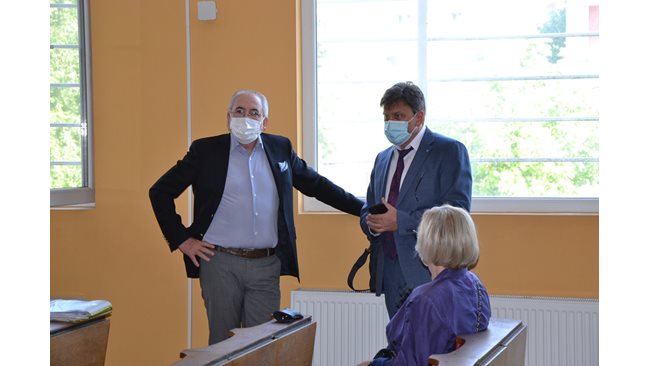1 Basante et al. Pag.35 Evaluation of nitrogen fertilization in roses (Rosa sp. Var. Classy) using nitrogen 15 as a tracer Basante, Emilio ª * – Pazmiño, Diego b – Avalos, Rodrigo ª Sangurima, Claudia b _ Urquiaga, Segundo and Universidad de las Armed Forces ESPE Av. Progreso SIN, Sangolquí, Ecuador b Ecuadorian Atomic Energy Commission, Quito, Ecuador 0 Embrapa Agrobiología. Seropédica, Rio de Janeiro, Brazil Received: 12/08/2014 Revised: 02/23/2015 Accepted: 03/11/2015 ABSTRACT The objective of the study was to evaluate nitrogen fertilization in rose production, through the use of the isotope nitrogen 15 as a tracer. The use of stable isotopes in agriculture is a very useful direct technique for studies of absorption and efficiency of use of fertilizers. In this research, ammonium nitrate marked with nitrogen 15 was used and it was applied in the micro plots of the treatments under study, following the same farm management conditions. The applications were made every week according to the frequency of fertilization carried out by the farm. During the study, the growth and production of vegetative mass, nitrogen content in the soil and nitrogen recovery by the plant were evaluated. The samplings were carried out at 0, 30, 60 and 90 days of the growth of the flower stem. The nitrogen content was determined by the micro Kjeldahl method and optical emission spectrophotometer, the latter for nitrogen 15. The results allowed evaluating the amount of nitrogen from the fertilizer, the amount that remained in the soil and the efficiency of use of the fertilizer. It was concluded that the nitrogen content recovered from the fertilizer in the soil and plant varied around kilograms of nitrogen per hectare, which shows that the soil has a relatively stable capacity to retain the nutrient, therefore, any dose of fertilizer applied , greater than the retention capacity of the soil will be subject to losses of around 25.4 to 57.2 percent, in addition to that the excesses of nitrogen applied had an effect on the yield and salinity. Keywords: Nitrogen 15, isotopes, nitrogen recovery in roses. ABSTRACT The objective of the study was to evaluate nitrogen fertilization in the production of roses (var. Classy), through the use of the isotope nitrogen 15 as a tracer. The use of stable isotopes in agriculture is a direct technique useful far studies of absorption and efficiency of use of fertilizers. Ammonium nitrate labeled 15 was * Correspondence to: University of the Armed Forces ESPE, AV. Progreso S / N, Sangolqui, Ecuador. Telephone: Email: used in this research and was applied in micro plots of treatments in study, following the same conditions of farm management. Applications were made every week according to the frequency of fertilization that made the farm. During the study assessed growth and vegetative mass production, content of nitrogen in the soil and recovery of nitrogen by plant. The samples were taken at O, 30, 60 and 90 days of the flowering stem growth. The nitrogen content was determined by micro Kjeldahl method and optical emission spectrophotometer, this last far 15 nitrogen. The results allowed to evaluate the amount of nitrogen from the fertilizer, the amount that was left in the soil and fertilizer use efficiency. lt was concluded that the content of nitrogen recovered from the fertilizer into the soil and plant, varied around kilograms of nitrogen per hectare, which shows that the soil has a relatively stable capacity of retaining the nutrient, so that any dose of applied fertilizer, exceeding the capacity of soil retention is subject to losses of a round of the 25.4 to 57.2 per cent, addition that the excesses of applied nitrogen had effect on performance and salinity. Keywords: Nitrogen 15, isotopes, Nitrogen recovery in roses. l. INTRODUCTION Since its inception in the seventies, Ecuadorian floriculture has followed a process of successful expansion until reaching 3,821 hectares in 2005, of which 2,500 hectares are dedicated to the cultivation of roses. The highest percentage of flower producing area in Ecuador is located in the Province of Pichincha (1985 hectares) followed by Cotopaxi, Azuay, Imbabura, Guayas, Cañar, Carchi and Laja which together add up to hectares. The exported value of flowers in our country has had an upward behavior with an average annual growth of 11 percent in period O, the production of roses reached an average of 95,272 metric tons exported, being a significant economic item of the total income that the country generates in agriculture [9]. Therefore, AGROCALIDAD ECUATORIAN INSURANCE AGENCY OR: LACAIJIW) OR: L, IGRO
2
–  –
–  –
–
3
 –
–  –
–  –
–
4
 –
–  –
–
5
6
7
–


